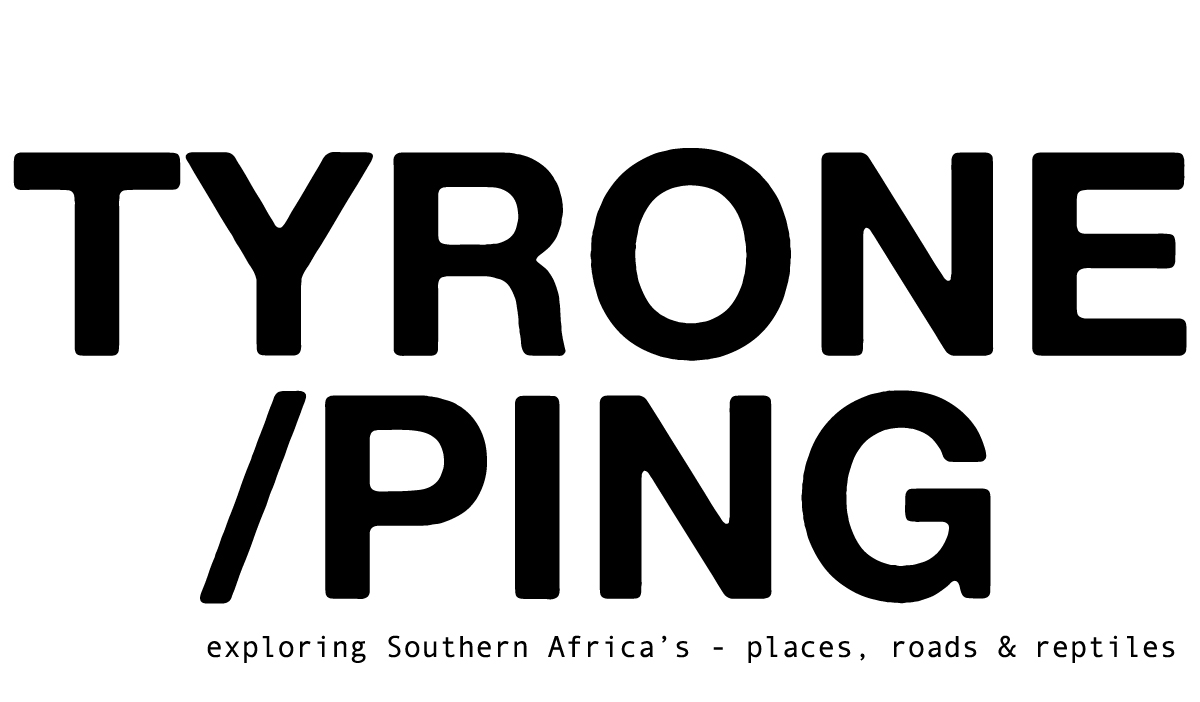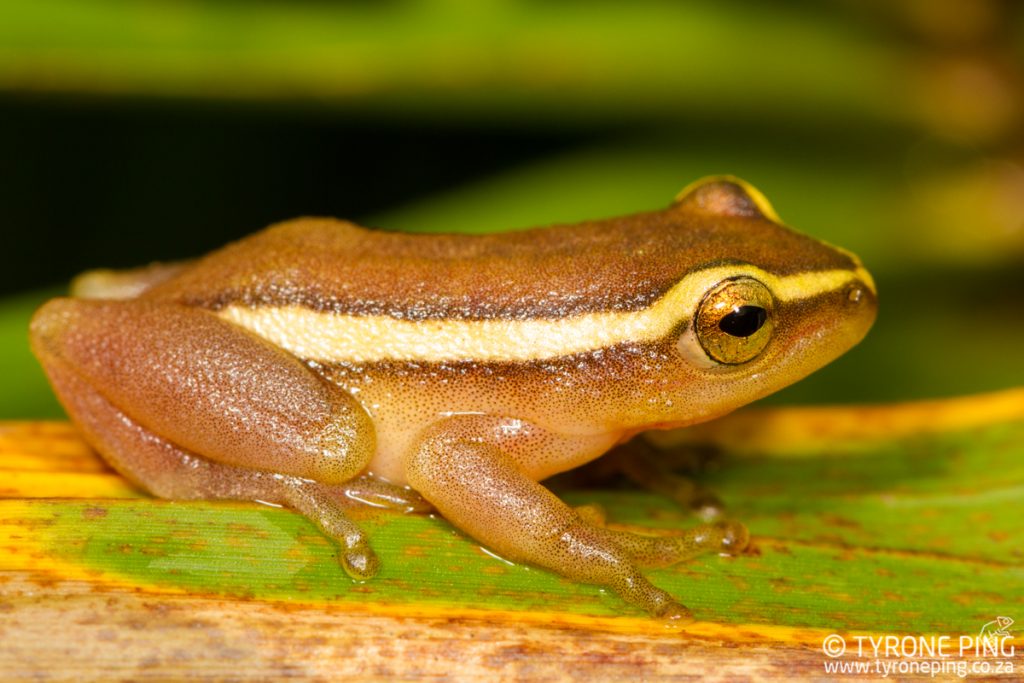This species is endemic to the coast of KwaZulu-Natal Province, South Africa, and is found within 15 km of the coast up to 380 m asl. It was previously thought to range from Warner Beach in the south to St Lucia village in the north; however, it has now been recorded from additional localities and occurs from Sezela to St Lucia village (Tarrant and Armstrong 2013). Given the distribution of existing subpopulations, there are 12 threat-defined locations. Its extent of occurrence (EOO) is 4,768 km2 and its area of occupancy (AOO) is 12 km2. – iucnredlist
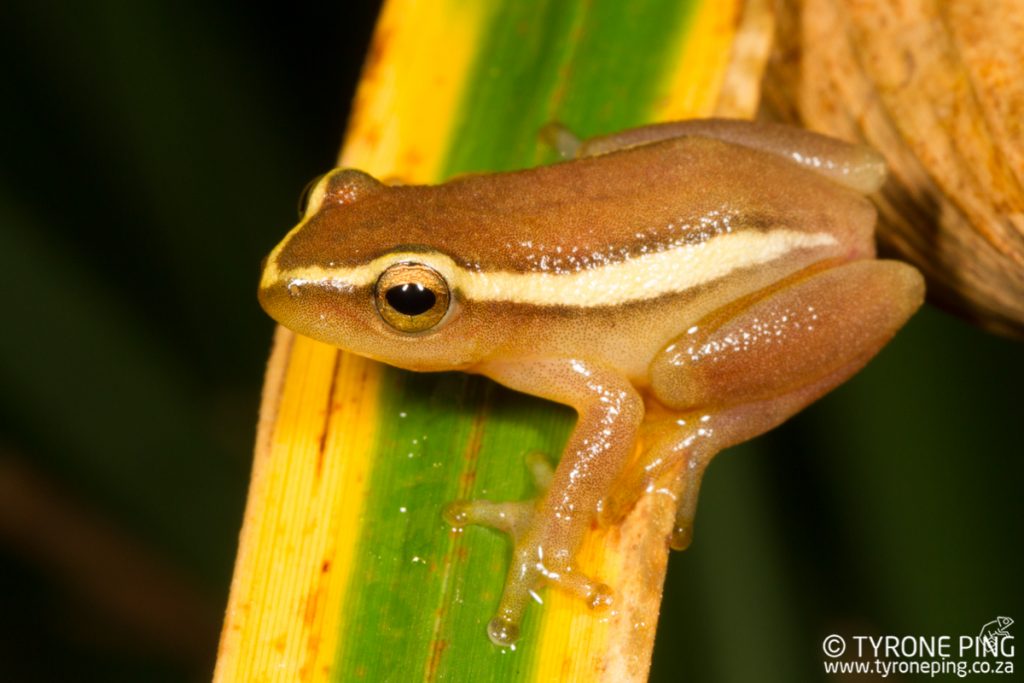
Hyperolius pickersgilli – Pickersgils Reed Frog (Male)
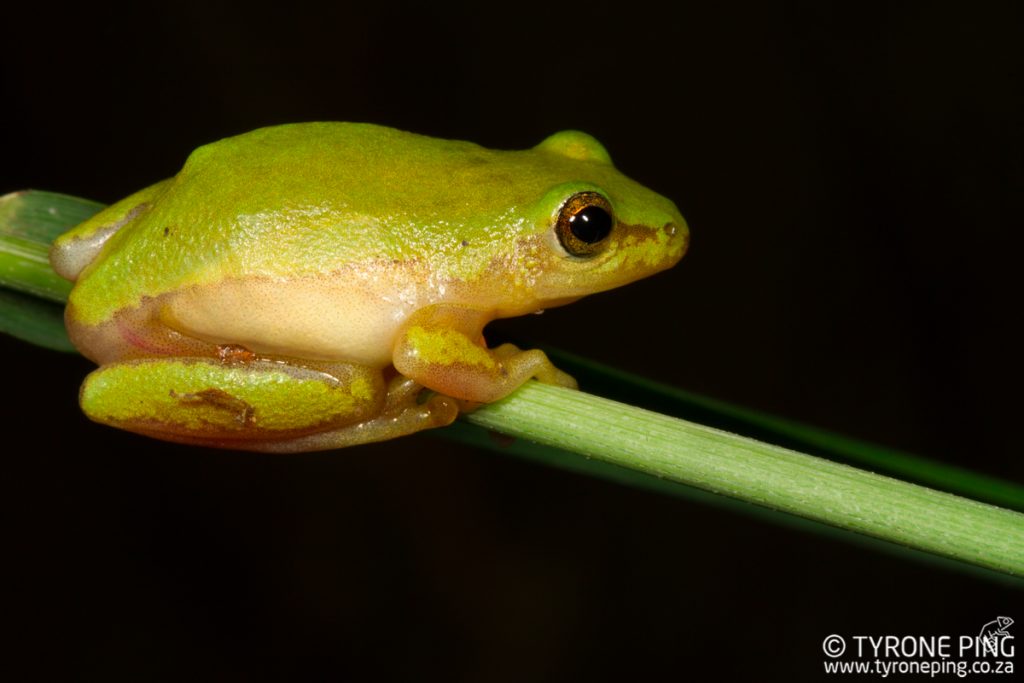
Hyperolius pickersgilli – Pickersgils Reed Frog (Female)
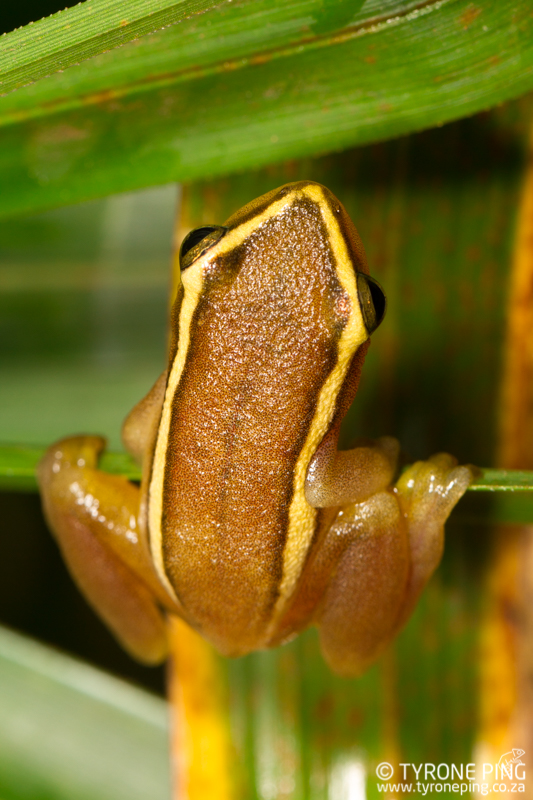
Hyperolius pickersgilli – Pickersgils Reed Frog (Male)
The species is a habitat specialist occurring primarily in Indian Ocean Coastal Belt Vegetation Group 2, which is Critically Endangered and poorly protected. It requires perennial wetlands comprised of very dense reed beds at low altitudes (Raw 1982, Armstrong 2001, Bishop 2004). It also requires an understory of thick vegetation, such as Snakeroot (Persicaria attenuata), from which males call and taller broad-leaved vegetation, including the Common Reed (Phragmites australis), Bulrushes (Typha capensis), and sedges (including Cyperus dives, C. latifolius and C. papyrus) on which to lay its eggs (Raw 1982, Bowman 2011, Tarrant and Armstrong 2013). It is associated with deeper areas of water within wetland systems (20-80 cm) (Trenor 2014). It is seldom found at the same breeding sites as the abundant Hyperolius marmoratus.
Sources:
iucnredlist
